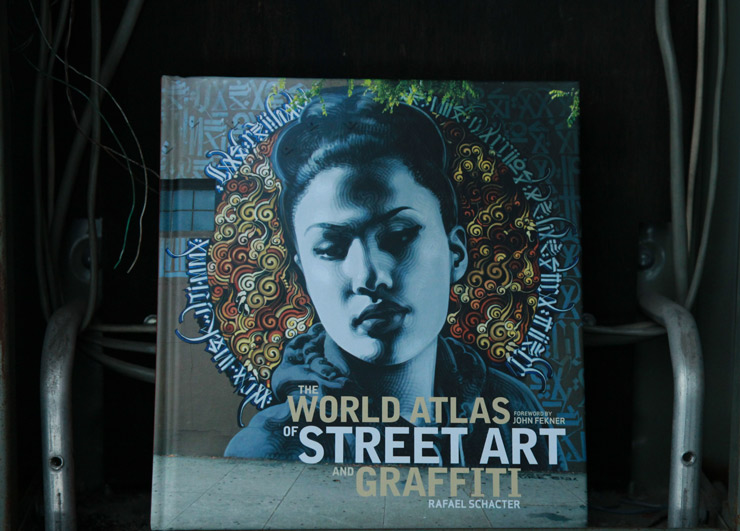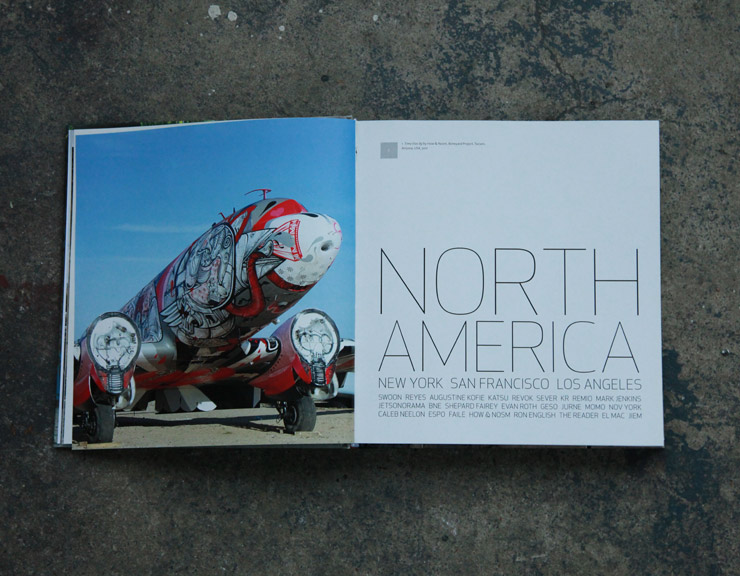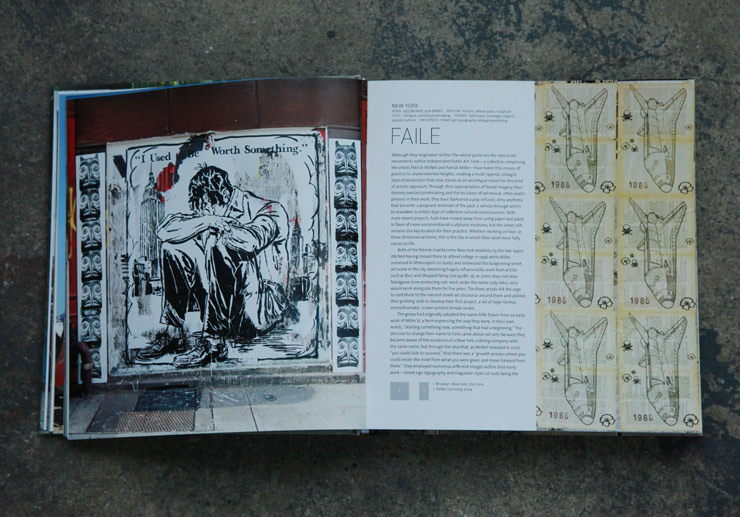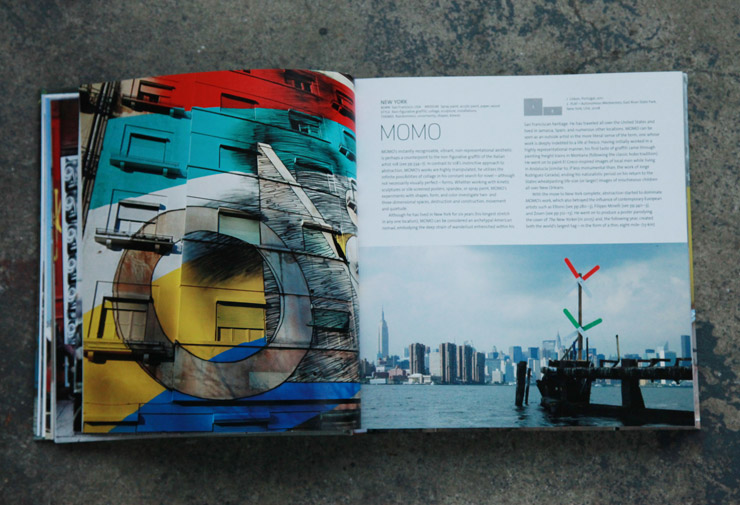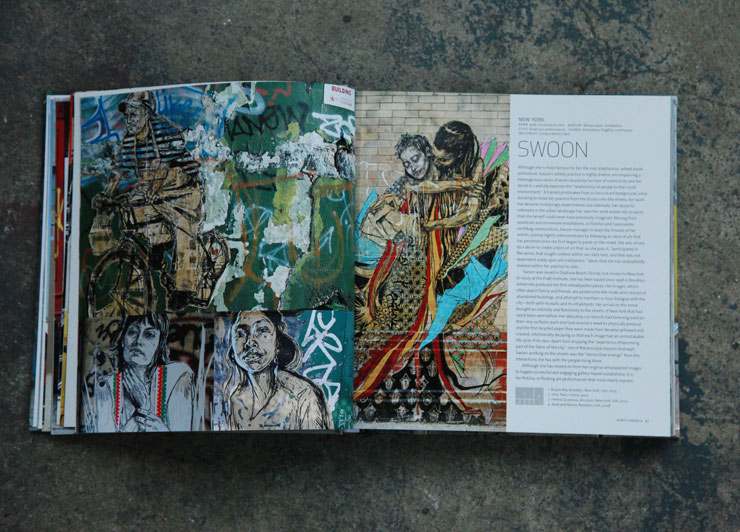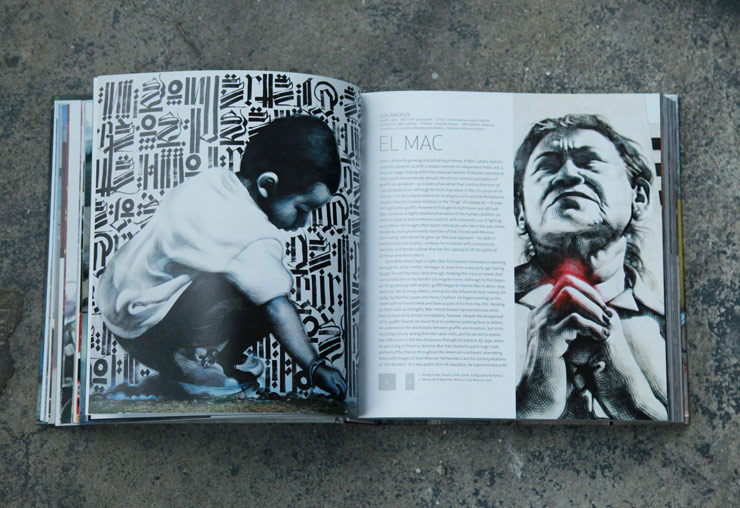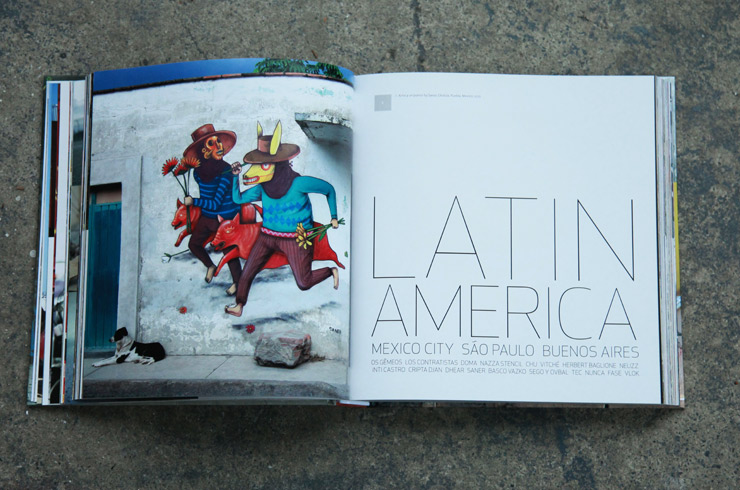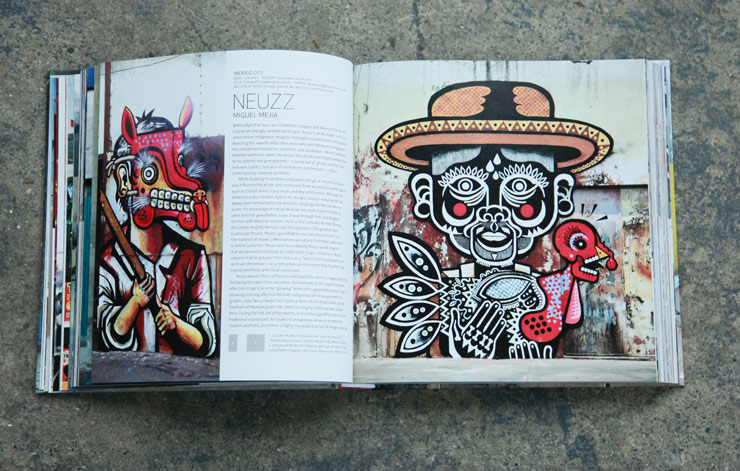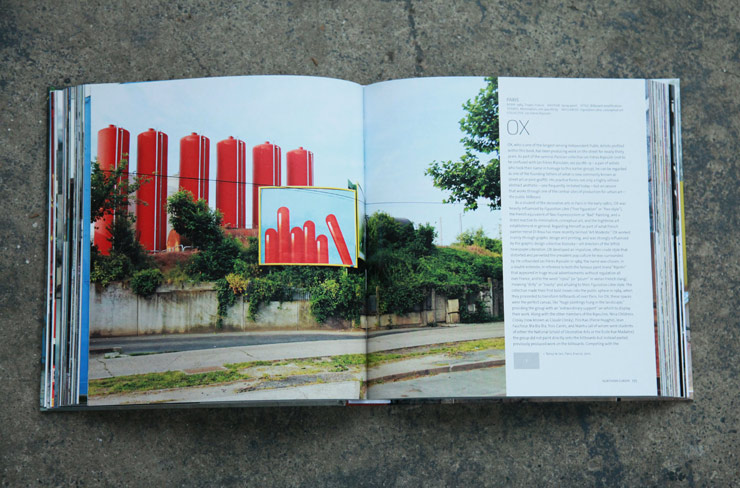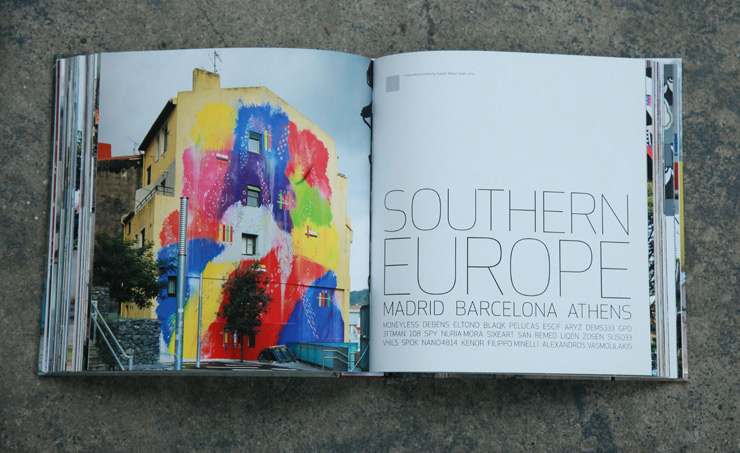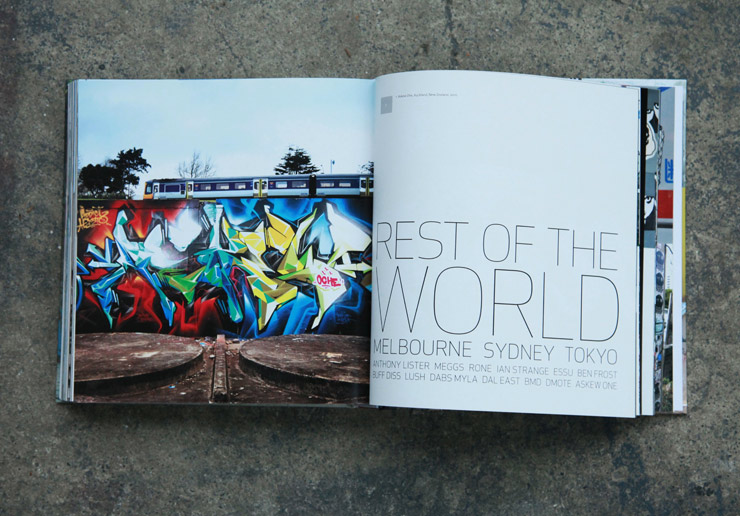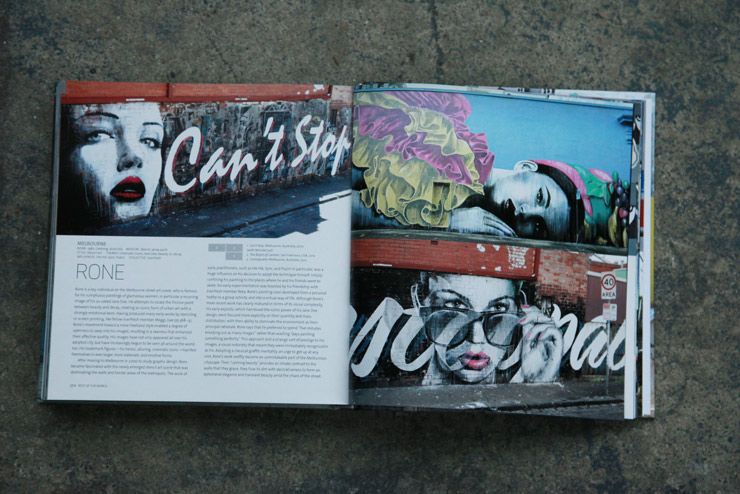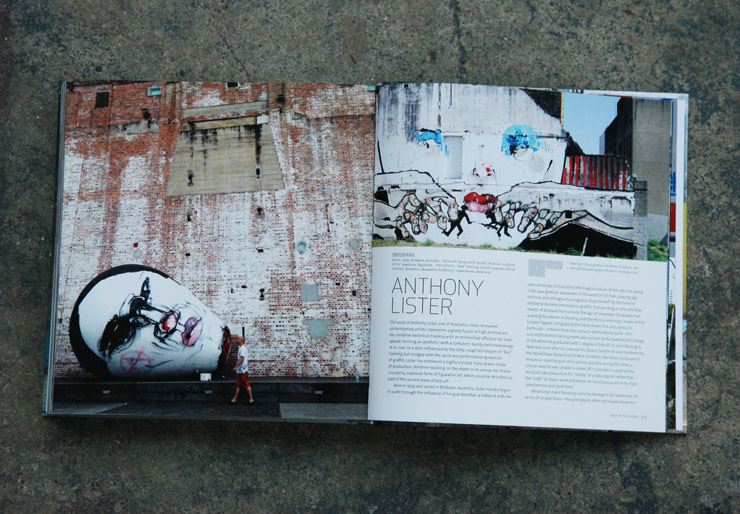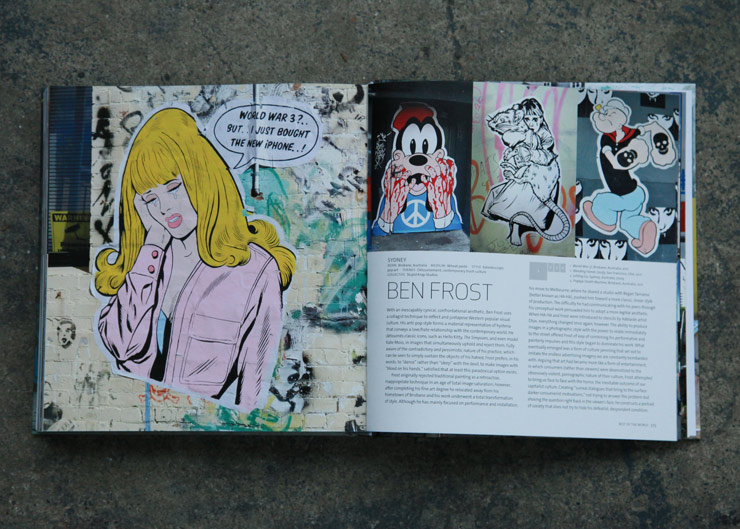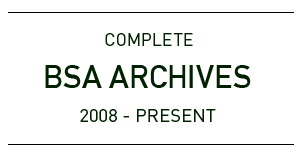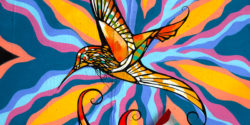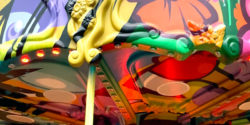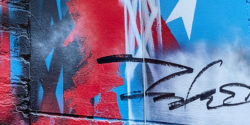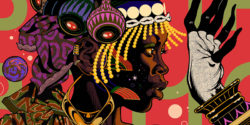As we endure our one billionth snowstorm this winter we continue to paw through the stack of beautiful Street Art, graffiti, public art, and urban art books that we are honored to receive through the mail, and today we’re taken by The World Atlas of Street Art and Graffiti by Rafael Schacter, with foreword by John Fekner.
Rafael Schacter “The World Atlas of Street Art and Graffiti”
The substantial hardcover from Yale University Press is a very solid survey of largely undisputed practitioners of Street Art world wide as well as a number of lesser known names, accompanied by succinct and accurate overviews of their individual influences and styles. With contributors that include a good balance of graffiti artists, street artists, academics, authors, graphic designers, writers, and aestheticians of various stripes, Rafael Schacter has done his research; presenting 113 artists from 25 countries with illustrative photography and examples.
Aside from the thankless task of the editing of candidates that will necessarily leave out hundreds of great artists, Schacter endeavors to present a good cross-section, something that represents the scope of the “independent public art” that has now lifted the oeuvre to global recognition along with historical context and without the narrowly pinched European academic need to effect sanctimonious pronouncements or subtly derisive classist views upon it.
Rafael Schacter “The World Atlas of Street Art and Graffiti”
“Indeed, there are as many different motivations, styles, and approaches within this artistic arena as there are practitioners themselves – a ‘street art’ for every street artist, a ‘graffiti’ for every graffiti writer,” says Schacter in his introduction, and his appreciation for the fundamentals of a self-determination philosophy toward the act of creative expression permeates the descriptions and analysis while gaining your respect for his adept characterizations.
We gratefully acknowledge his help in trying to categorize and describe the enormous varieties of styles, practices and influences at play today, a quickly sampling of which includes for example abstractionist, absurdist, anti-aestheticism, character based, classic graffiti lettering, collage, conceptual, contemporary, culture jamming, decontextualization, decorative, digital/geek, figurative, folk, geometric, graphic design, illustration, indigenous, installation based, interventionist, naïve, performance, photo realistic, photographic, sculptural, surrealist, symbolic, and typographic.
Rafael Schacter “The World Atlas of Street Art and Graffiti”
With a brilliant and personal foreword by conceptual text-based and multimedia artist John Fekner, a veteran of the art-in-the-streets practice that predates the birth of many of the artists in the book, we get a scene-setting update on what collectively is evolving as well as an insight into what is feeding the explosive growth. “For the first time in history, artists who are creating art away from the major centers of art and culture are no longer at a disadvantage. The Internet has increased accessibility through the proliferation of blogs and social media, which has fueled hordes of dedicated fan bases using cell phones and cameras to instantly record, document, and post their interpretations of life, culture, and art online,” Fekner writes.
With a well-rounded atlas like this at hand the student, scholar, and fan can gain a greater understanding of the guys and girls that paint messages in the street as well as an appreciation for their minds and craft.
Rafael Schacter “The World Atlas of Street Art and Graffiti”
Rafael Schacter “The World Atlas of Street Art and Graffiti”
Rafael Schacter “The World Atlas of Street Art and Graffiti”
Rafael Schacter “The World Atlas of Street Art and Graffiti”
Rafael Schacter “The World Atlas of Street Art and Graffiti”
Rafael Schacter “The World Atlas of Street Art and Graffiti”
Rafael Schacter “The World Atlas of Street Art and Graffiti”
Rafael Schacter “The World Atlas of Street Art and Graffiti”
Rafael Schacter “The World Atlas of Street Art and Graffiti”
Rafael Schacter “The World Atlas of Street Art and Graffiti”
Rafael Schacter “The World Atlas of Street Art and Graffiti”
Rafael Schacter “The World Atlas of Street Art and Graffiti”
Rafael Schacter “The World Atlas of Street Art and Graffiti”
<<>>><><<>BSA<<>>><<<>><><BSA<<>>><><<>BSA<<>>><<<>><><BSA Please note: All content including images and text are © BrooklynStreetArt.com, unless otherwise noted. We like sharing BSA content for non-commercial purposes as long as you credit the photographer(s) and BSA, include a link to the original article URL and do not remove the photographer’s name from the .jpg file. Otherwise, please refrain from re-posting. Thanks! <<>>><><<>BSA<<>>><<<>><><BSA<<>>><><<>BSA<<>>><<<>><><BSA
Other Articles You May Like from BSA:
Deconstruct. Decontextualize. Words that artists like to use when describing the techniques and intellectual positioning of their works. Here we find SpY doing a lot of both. SpY. "Barrier Tape". Am...
“No Questions Asked” says Hargo of this slyly-named collection of Cash For Your Warhol pieces opening this week at a small gallery in Philadelphia’s Fishtown neighborhood. But you may want to ask a fe...
Indoor and outdoor merge in shifting slabs of memory that slip and stick in this new Berlin wall by Johannes Mundinger. In work that similarly slides from representative and abstract, the work of the...
If you are looking for a neighborhood that is analogous to what the Lower East Side of Manhattan was like in the 1970s, you have to go to the outer part of the outer boroughs because very few working ...
Elfo is a graffiti writer and social commentator whose work intentionally sidesteps traditional notions of style or technical lettering. This is not about handstyle, friend. Instead, it provokes thou...
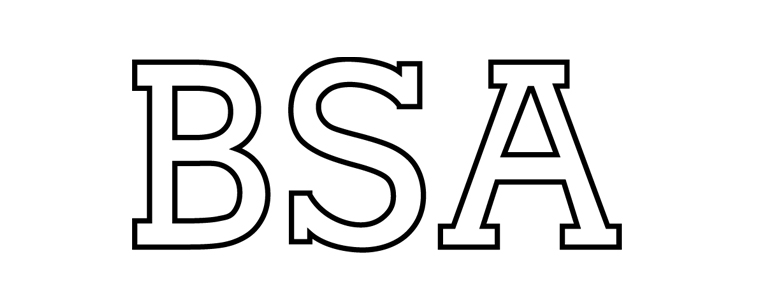 BROOKLYN STREET ART LOVES YOU MORE EVERY DAY
BROOKLYN STREET ART LOVES YOU MORE EVERY DAY